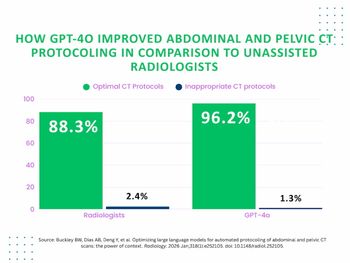
Multi-Parametric MRI Underestimates Prostate Tumor Size
Pathological tumor size is frequently under-estimates the size of prostate tumors, particularly smaller tumors.
New evidence shows that multi-parametric MRI (mpMRI) routinely provides radiologic tumor size (RTS) measurements smaller than the actual pathologic tumor size (PTS), contradicting previous findings that it offers over-estimations.
In a study published Jan. 7 in the
MRI is the typical method for diagnosing and managing prostate cancer, but, by failing to accurately measure lesion size, said the team led by Aydin Pooli, M.D., clinical instructor of urology, using mpMRI in these situations could lead to potentially lead to under-treatment.
“Multi-parametric magnetic resonance imaging frequently underestimates pathological tumor size and the degree of underestimation increases with smaller radiologic tumor size and lower PI-RADSv2,” the team said. “Therefore, a larger ablation margin may be required for smaller tumors and lesions with lower PI-RADSv2 scores.”
Their study, they said, incorporated a larger study population than previous studies that have examined the accuracy of mpMRI.
Despite being the scan of choice with prostate cancer tumors, questions have lingered about its accuracy in depicting tumors size. To put these uncertainties to rest, Pooli’s team analyzed 461 lesions in 441 men (average age of nearly 62 years) scanned with a 3T mpMRI between June 2010 to February 2018. Their median PSA and PSA density were 6.3 ng/ml and 0.174, respectively.
Based on their analysis, the team found the mean maximum RTS and PTS were 1.6 cm and 2.4 cm, respectively, revealing that RTS, on average, underestimated PTS by 0.8 cm. In particular, they said, the discrepancies in the measurements increased as the lesions got smaller. For lesions smaller than 1 cm, the difference on mpMRI was 1.25 cm; it was 0.86 cm for lesions between 1 cm and 2 cm; and it was 0.3 cm for lesions greater than 2 cm.
These differences, they said, show that 98 percent of PTS measurements were larger than RTS for lesions less than 1 cm. These percentages were lower for lesions between 1 cm and 2 cm (88 percent) and those larger than 2 cm (63 percent), meaning that the majority of men received incorrect assessments as part of their prostate cancer management.
In addition, they said, the correlations between RTS and PTS based on biopsy Gleason Grade Group (GG) and radiologic covariates were generally low with correlation coefficients ranging between 0.1 and 0.65.
“Although the correlations were statistically significant, the degrees of correlation were generally low, which questioned the clinical usefulness of biopsy GG, PI-RADSv2 core, radiologic zone, and level in predicting PTS,” they said.
These results, they said, indicate that providers must consider additional management options for prostate cancer, and they must proceed with more caution when dealing with smaller tumors on mpMRI or with men who have lower PI-RADSv2 scores.
“Our study suggests that by relying on RTS alone we can only be sure of complete ablation of the mpMRI detected lesion if a large margin is used in the largest diameter, especially for tumors less than 2 cm,” they explained. “Smaller margins, although acceptable, will have a lower degree of certainty for complete ablation of the prostate lesion.”
They suggested incorporating tracked biopsy around the mpMRI detected prostate lesion could help overcome the tumor characterization limitations. But, there is still more research to be done, they said.
“Further work in this area should seek to develop algorithms that accurately combine RTS and patient specific factors to correctly predict patient specific factors to correctly predict PTS,” they said. “Until these algorithms exist, care must be taken when both interpreting and using mpMRI for treatment selection and planning.”
Newsletter
Stay at the forefront of radiology with the Diagnostic Imaging newsletter, delivering the latest news, clinical insights, and imaging advancements for today’s radiologists.




























